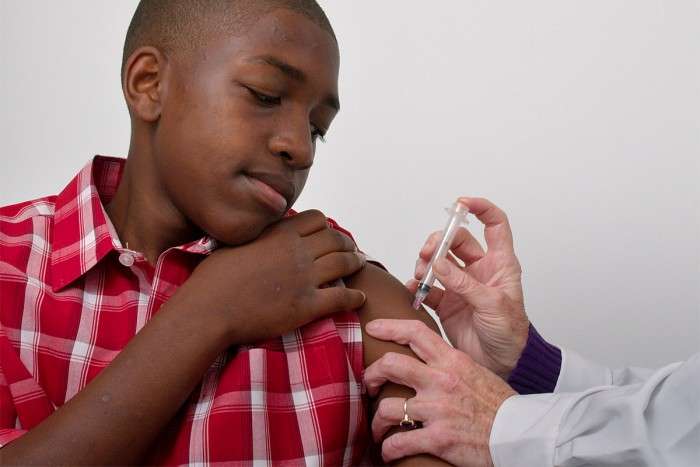Not enough kids receiving the recommended three doses of HPV vaccination

Most cancers caused by the human papillomavirus (HPV) are preventable with a vaccine. Yet the infection is responsible for 27,000 cancer diagnoses each year in the U.S.
To reduce that number, Siteman Cancer Center at Barnes-Jewish Hospital and Washington University School of Medicine in St. Louis is joining with the 68 other National Cancer Institute-Designated Cancer Centers to promote HPV vaccination.
The campaign is the result of growing national concern about low rates of HPV vaccination, an intervention proven to prevent the potentially deadly disease in adults.
"Cancer prevention is always preferable to cancer treatment," said Timothy J. Eberlein, MD, director of Siteman Cancer Center and head of the Department of Surgery at the School of Medicine. "And preventing cancers caused by HPV is as simple as receiving a vaccine."
HPV is the most common sexually transmitted infection in the U.S., according to the National Cancer Institute. Cancers caused by the virus mainly occur in the mouth and throat, cervix and genital organs. Cervical cancer, which can cause infertility, is the most common HPV-related cancer in women. Oropharyngeal cancers, which occur in the back of the throat, including the base of the tongue and tonsils, are the most common HPV-related cancers in men.
The American Academy of Pediatrics recommends that boys and girls receive the vaccine, known commercially as Gardasil or Cervarix, at ages 11 or 12, because the vaccine is most effective before a person becomes sexually active. It is administered in three doses, the second occurring one to two months after the first, and the final one taking place six months after the first.
Only 40 percent of girls and 21 percent of boys in the U.S. are receiving the recommended three doses of the HPV vaccine, according to the Centers for Disease Control and Prevention (CDC). The goal is 80 percent by the end of the decade, as established by the U.S. Department of Health and Human Service's Healthy People 2020 mission.
Parents who have questions about the vaccine should talk to their children's pediatricians or their own physicians, or visit the CDC website.
"No parent would wish cancer on his or her child down the road," Eberlein said. "By vaccinating adolescents against HPV, we can help ensure a healthier future ahead."














